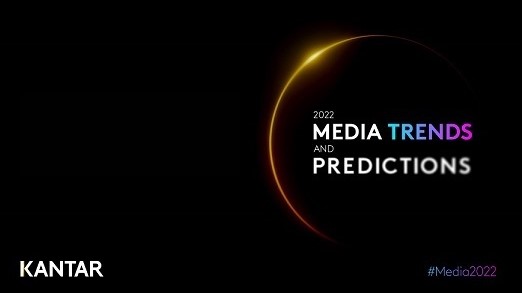Focused on five key areas, Kantar experts predict a range of shifts for the industry as it grapples with the pandemic era.
Online media spend increased in 2021, expected to continue in 2022
Kantar, the world’s leading data-driven analytics and brand consulting company reveals the trends and recalibrations at play in the global media industry and its expert predictions for this year.
Keerat Dhillon, Associate Director & Media Effectiveness Measurement Lead, MENA, for Kantar’s Insights Division comments: “The media landscape has always been dynamic, with the pandemic further fueling all the change. Digital consumption increased massively, and while some newer players grew exponentially during this time, advertisers still need to think very strategically about how to steer and operate in this changing landscape. Content and context are now king, so the key is to minimise intrusion while maximising relevance for consumers. With clear evidence of the power of multi-media campaigns, customising your creatives to each context and amplifying the campaign’s coverage is key to driving maximum impact in the Middle East.”
The Media Trends and Predictions 2022 report gives a definitive view of industry trends using Kantar’s market-leading data, alongside evidence-based predictions and expert viewpoints to help media owners and brands build their plans for 2022 and beyond.
- Transparency in VoD viewership will transform media’s most dynamic market – From audience attitudes to commercial models there will be multiple changes in the media’s most dynamic market. The transparency created as more actual VoD viewing figures are published at a programme level will generate a host of transformations. Content owners and producers will command higher licensing and carriage fee negotiation rights than before. Streaming platforms for sport and e-sports will gain more traction with fans. Platform consolidation will continue, driven by the need to offer more (and better) content bundles to lure new viewers in a crowded marketplace. Sole subscription offerings will become scarce. The volume of deals will accelerate on 2021 levels as platforms, operating in increasingly overlapping ecosystems, will continue to merge and form partnerships.
- Re-modelling of the commercial internet – For media owners and advertisers the two-year reprieve from Google represents an opportunity to experiment with new approaches. In Kantar’s experts’ view, a serious recalibration of the commercial internet is now underway. Brands and agencies are experimenting with hybrid data strategies that fully encompass privacy, purposefully blending their owned consumer data with panel-based sources and other high quality – and fully consented – third party data such as socio-economic, past purchase behaviour, attitudes about other brands, and more. In targeting, expect a move towards contextual advertising. In campaign effectiveness, investment in direct-integration based measurement like Kantar’s own Project Moonshot will ensure advertisers can independently measure ad campaign performance through a range of publishers.
- Performance media and marketing balancing act – Many brands adopted performance-based strategies to survive the pandemic. The question now is how to follow up on the 2021 rebound. We will see increasing competition for performance marketing spend with the growth of social commerce, local retail giants becoming more sophisticated ecommerce ad spend players and metaverses gaining prominence. Kantar’s experts also anticipate a rebalancing of spend across performance media and brand building campaigns. We will also see more advanced cross-media campaign measurement and in-flight optimisation to boost efficiency as advertisers demand performance measurements on a platform-comparative basis.
- New approaches to data – Advertisers’ attitudes toward data are changing.2022 will see a

renewed sense of value and urgency as the search for high-quality data becomes the fastest growing issue for marketers. Those with ambitious data strategies will have the upper hand. Brands will lean into their direct consumer relationships to make the most of and experiment with their owned ‘first-party’ data. Brands will enrich behavioural planning with attitudinal overlays and refinements, and develop new methodologies to overcome the lack of competitive intelligence; all with the aim of developing the most rounded view of consumers.
- Reshaping for COVID-era behaviours. Brand offerings will need to reflect and shape the changed realities of consumer behaviour. Brands, products and services will need to meet new consumer needs for convenience, value, sustainability, and innovation. The brands that invest – in data, insight, people and marketing – will flourish. The most successful brands will embrace the differences – diversity and complexity – of the audiences they’re seeking to reach. This presents a great opportunity for brands to develop in this recovery period: explore deeper segmentations and engage with communities beyond their existing audience.
Commenting on the predictions, Francois Nicolon, CMO, Media Division, Kantar, said: “2022 will see a refocusing of attention in the industry following a year of growth and agility in the face of the pandemic.
With some pretty seismic changes afoot in terms of cookie deprecation and consumers’ attitudes and new habits, the industry will have to adapt and learn to find new strategies for success. Whether that’s through investing in more content to lure viewers in a crowded marketplace, rethinking commercial models or experimenting with new approaches to better use data, adaptability and the ability to test and learn will be key.”
Find out more. Download Kantar’s Media Trends and Predictions report, the go-to reference for media owners, advertisers and agencies: www.kantar.com/campaigns/media-trends-and-predictions-2022. With expert viewpoints from across Kantar’s global media expertise, the report has an unparalleled view of industry trends based on Kantar’s gold standard data sources.
- Ends –













